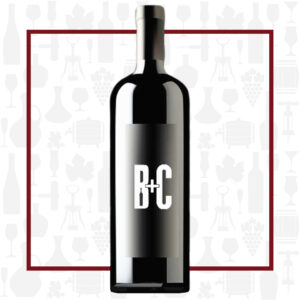Cellar Profile
In 1999, Pinot Noir devotee Charles Smedley purchased 10 acres of land in Yarra Junction. This area was much colder than other areas of Yarra Valley and experienced higher than average rainfall. He set about planting Burgundian clone Pinot Noir, with an eye towards crafting elegant, signature Pinots displaying the terroir and character of the region. A decade later, the winery now has another larger vineyard where there is Chardonnay, Cabernet Sauvignon, Shiraz, Merlot, Pinot Noir and Sauvignon Blanc under vine, all with that house style of elegance and sensibility. Mandala’s vineyards are hand-pruned and hand-harvested, with minimal intervention for the low-yielding vines. The long, cool ripening season allows full phenolic ripeness that ensures depth of flavour without high alcohol levels. These are characterful wines that have a level of complexity that truly tells the tale of the Yarra Valley.
Region
The Yarra Valley is a well-respected Australian wine region which occupies the eastern half of the Port Phillip viticultural zone in the diminutive state of Victoria. One of Australia’s oldest and most celebrated wine regions, the earliest Yarra Valley vineyards were planted in 1838. The climate here is amongst the coolest of any Australian wine region, partly due to elevation—which reaches 500 masl—but mostly due to the hilly topography, which creates shadows, shelter and heat sink.
Vineyard
The Dixon Creek vineyard is the homestead for Mandala. The 104-acre vineyard averages elevations of 125-160 masl. Comprised of clay loam soil, the vines, averaging 25 years, are hand-pruned, hand-harvested and low yield.
Varieties
Cabernet Sauvignon is probably the most famous red wine grape variety on earth and has successfully spread to almost every wine growing country. DNA profiling carried out in California in 1997 confirmed that Cabernet Sauvignon is the product of a natural genetic crossing between key Bordeaux grape varieties Cabernet Franc and Sauvignon Blanc. There are two key reasons for Cabernet Sauvignon’s rise to dominance. The most simple and primordial of these is that its vines are highly adaptable to different soil types and climates; it is grown at latitudes as disparate as 50°N (Okanagan Valley, Canada) and 20°S (northern Argentina), and in soils as different as the gravels of Pessac-Leognan and the iron-rich terra rossa of Coonawarra. Secondary to this, but just as important, is that despite the diversity of terroirs in which the vine is grown, Cabernet Sauvignon wines retain an inimitable “Cab” character, nuanced with hints of provenance in the best-made examples. Cabernet Sauvignon wines always seem to demonstrate a handful of common character traits: deep color, good tannin structure, moderate acidity and aromas of blackcurrant, tomato leaf, dark spices and cedarwood.
Winemaking
Two separate batches of Cabernet were vinified in open top fermenters. Daily hand plunging. One batch was pressed early to preserve fresh fruit flavours; the second underwent extended maceration to build structure and length. 11% Merlot and 4% Cabernet Franc were added for further complexity and interest. Aged 18 months in French oak, 35% new.
Tasting Notes
Rich cassis and lifted violet aromas lead into spiced clove, mocha and cedary oak. Blackcurrant and blueberry flavours give way to savoury notes of black olive, coffee and dark cocoa. Mid-weight with fine tannins, delivering a long length and a persistent finish. Merlot adds a plush, silky texture.

 info@buyersandcellars.ca
www.buyersandcellars.ca
info@buyersandcellars.ca
www.buyersandcellars.ca